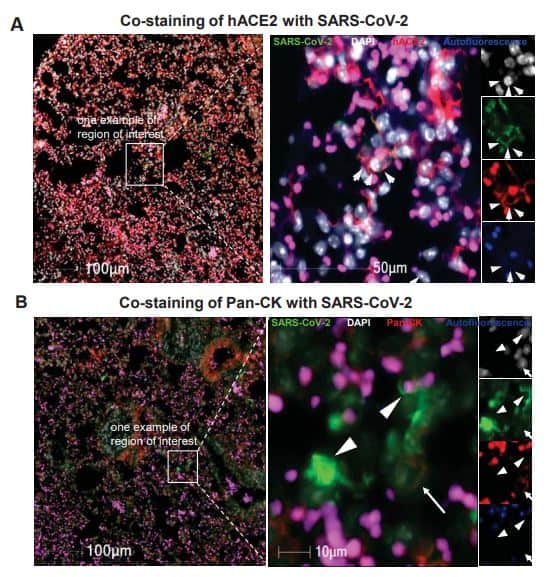Lung Expression of Human ACE2 Sensitizes the Mouse to SARS-CoV-2 Infection

Han, K., Blair, R.V., Iwanaga ,N., et al. Lung Expression of Human ACE2 Sensitizes the Mouse to SARS-CoV-2 Infection. Am J Respir Cell Mol Biol. 2020 Sep 29.
Preclinical mouse models that recapitulate some characteristics of COVID-19 will facilitate focused study of pathogenesis and virus-host responses. Human angiotensin converting enzyme (hACE2) serves as an entry receptor for SARS-CoV-2 to infect people via binding to spike proteins. Herein we report development and characterization of a rapidly deployable COVID-19 mouse model. C57BL/6J (B6) mice expressing hACE2 in the lung were transduced by oropharyngeal delivery of the recombinant human adenovirus type 5 that expresses hACE2 (Ad5-hACE2). Mice were infected with SARS-CoV-2 at day 4 post-transduction and developed interstitial pneumonia associated with perivascular inflammation, accompanied by significantly higher viral load in lungs at days 3, 6, and 12 post-infection compared to Ad5-empty control group. SARS-CoV-2 was detected in pneumocytes in alveolar septa. Transcriptomic analysis of lungs demonstrated that the infected Ad5-hACE mice had a significant increase in interferon-dependent chemokines Cxcl9 and Cxcl10, and genes associated with effector T cell populations including Cd3g, Cd8a, and Gzmb. Pathway analysis showed that several KEGG pathways were enriched in the dataset, including cytokine-cytokine receptor interaction, the chemokine signaling pathway, the NOD-like receptor signaling pathway, the measles pathway, and the IL-17 signaling pathway. This response is correlative to clinical response in lungs of COVID-19 patients. These results demonstrate that expression of hACE2 via adenovirus delivery system sensitized the mouse to SARS-CoV-2 infection and resulted in the development of a mild COVID-19 phenotype, highlighting the immune and inflammatory host responses to SARS-CoV-2 infection. This rapidly deployable COVID-19 mouse model is useful for preclinical and pathogenesis studies of COVID-19.